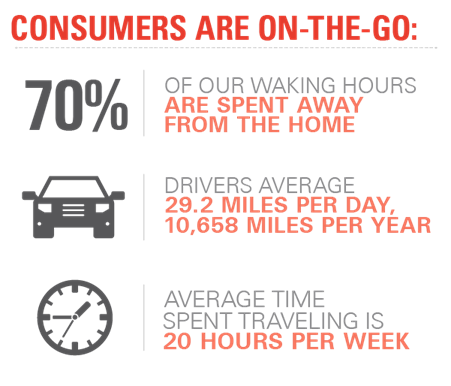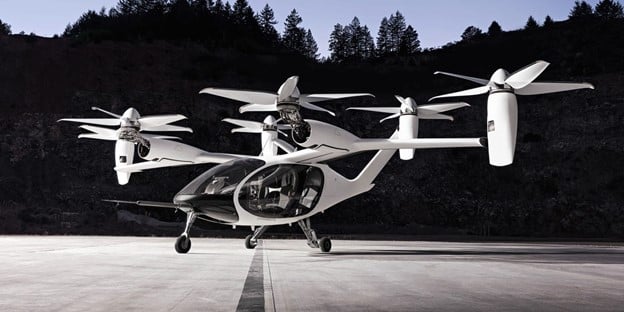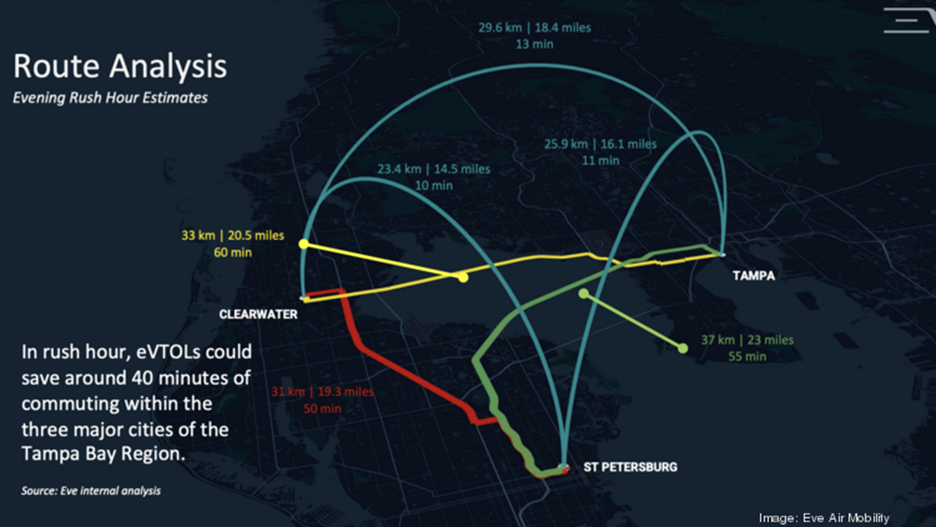The Ultimate Explosive ‘Sleeper’ Tech of 2024
Editor’s note: This story was previously published in September 2022. It has since been updated to include the most relevant information available.
Around the world, commutes are getting slower and more grating.
A study from TomTom released earlier this year shows Londoners have it the absolute worst, taking 36 minutes and 20 seconds to move 6.2 miles in their city. While New Yorkers have the worst commute in the U.S., making the same trek in 24 minutes and 30 seconds. And it’s just getting worse every year.
But relief may be on the way very soon.
And by very soon, I don’t mean by 2035 or 2040. Certain cities across the world may have flying cars by 2024.
That’s under a year away.
Sounds like a big deal, right? Yet, no one on Wall Street is really talking about the “Flying Car Megatrend.”
That’s perfectly OK. In fact, it’s better than OK – it’s great.
Ten years ago, Wall Street wasn’t paying attention to the electric vehicle megatrend. That gave prescient investors the chance to invest in Tesla (TSLA) before it shot to the moon.
Twenty years ago, Wall Street wasn’t paying attention to the e-commerce megatrend. That gave prescient investors the chance to invest in Amazon (AMZN) before it took off.
Thirty years ago, Wall Street wasn’t paying attention to the internet megatrend. And that gave prescient investors the chance to invest in Microsoft (MSFT) and Apple (AAPL) before they ripped higher into the stratosphere.
You see, Wall Street is always late to the party. That means with most technological megatrends, windows emerge to give ordinary investors the chance to invest before Wall Street – and secure their financial future.
That window is opening up right now with flying cars.
We truly believe that flying car stocks – ironically flying under the radar today – will have a breakout year in 2024. Much like Tesla in 2020, Amazon in 1998, or Microsoft in 1991. You get my point.
The time to invest is now – before that boom!
Here’s a deeper look.
Flying Cars: The Origin Story
Every revolutionary technological breakthrough has an origin story.
The idea of a flying car has been floated by scientists, auto execs, and futurists for decades. But for most of the 20th Century, flying cars were written off as a cool but unfeasible science-fiction concept.
Then the 2000s hit.
A combination of robust population growth, rapid urbanization, and widespread digitization all came to a head. Once-empty roads increasingly filled with passenger cars, delivery trucks, city busses, and more.
Twenty-minute daily commutes became thirty-minute commutes… then hour-long commutes… then two-hour-long commutes. Humans were wasting their lives in cars.

Suddenly, taking to the skies with flying cars would solve a big traffic problem. So, in the early 2010s, tech companies and venture capitalists across the globe began investing in that market. Their plan was to develop solutions that would allow consumers to take back their most valuable resource: time.
Shortly thereafter, the “Flying Car Revolution” began.
A Marvel of Engineering
Interestingly, the first wave of flying car companies didn’t approach the problem “car-first.” That is, they didn’t take a car and make it a flying machine. That would’ve required significant engineering.
Rather, they approached the problem “flying-first.”
How did they accomplish this?
They took a helicopter and made it smaller, cheaper, quieter, more mobile, and fully electric – a much simpler engineering feat.
In other words, in the early 2010s, various tech companies set out to create a new class of small, cheap, quiet, mobile, and electric helicopters that basically acted as “flying cars.”
That’s when a new type of technologically-advanced aircraft called eVTOL – or electric vertical takeoff and landing – was born.

These aircraft are quiet electric helicopters that are much cheaper, much easier to make, and much more mobile than traditional helicopters. For all intents and purposes, they are exactly what they were designed to be: flying cars.
As you can see, these eVTOL aircraft look very cool. But more than that, they represent a huge economic opportunity.
The Vision
What’s the vision for these eVTOL aircraft?
To provide cost-effective, quiet, and fuel-efficient mid-haul air transport.
Today, we have excellent short- and long-haul transportation options. Need to go from Los Angeles to New York? Hop on a plane. Need to grab some groceries? Hop in your car.
But there exists a huge “gap” in the market for mid-haul transport.
Let’s say you want to go from Los Angeles to San Diego. A plane trip is awfully expensive for that mid-distance haul. But a car trip can take up to three or four hours, depending on traffic. A train will take at least two hours, and any Uber (UBER) drive would cost hundreds of dollars.
The transportation world presently lacks excellent mid-haul options. eVTOL aircraft aim to fix that.
They’ll work something like this…
Imagine you live in downtown Los Angeles and want to spend the weekend in San Diego. In the future, you’ll drive your car down to a local vertiport – a small-scale airport for eVTOL aircraft – and park your car. You’ll hop into an eVTOL and, for no more than $100, will be flown to a San Diego vertiport. You’ll deplane, hop in an Uber, and ride to your hotel.
It’ll take no more than 30 minutes and cost you less than a car trip.
It’s an ideal mid-haul transport solution.
And it’ll be used everywhere. Los Angeles to San Diego was just an example. Think New York City to Boston. Philadelphia to Washington, D.C. Miami to Orlando. Dallas to Houston. Reno to Las Vegas. San Francisco to Sacramento.

eVTOL can be used all across the country – the world, even. And they won’t just be used for transporting people, but goods, too.
Long-term, the vision is for eVTOL aircraft to be all over urban areas. They’ll act as “air taxis” that are constantly, quickly, cheaply, and safely flying people and goods from place to place.
The Development
When I describe eVTOL mid-haul transport ecosystems to friends, they usually say: “Sounds cool. But I doubt we’ll see anything like that in the next 10 years.”
That’s a common misconception. eVTOL mid-haul transport ecosystems aren’t 10 years away. They’re less than two years away!
Remember when I told you that a whole bunch of tech companies were working on this problem? Well, their efforts have paid off. And now, there are dozens of working eVTOL prototypes in the world today.
Boeing (BA) has eVTOL aircraft. Airbus (EADSY) has one. Uber had one. About a half-dozen air taxi startups have one, too. United Airlines (UAL) recently announced an agreement to purchase up to 400 of them.
Indeed, the next generation of aircraft has arrived. Sure, it will take some time for them to become widely adopted. But not that much time.
Right now, this industry is booming. And within two years, you’ll be able to hail a flying car in certain cities like you hail an Uber today.
For example, one eVTOL maker just completed a successful hover test in December 2021. Another successfully completed public demos in Singapore, Dubai, and Las Vegas. Another will be an official aircraft operator in 2022. One has ~1,300 orders. Another has almost 2,000 orders valued at more than $5 billion. Yet another is building an eVTOL aircraft for UPS (UPS) to shuttle goods between fulfillment centers.
And nearly all are targeting commercial operations launch in 2024.
Folks, we are standing on the precipice of a new era in transportation. Our cities will be filled with eVTOL aircraft ushering people and goods all over the place.
Welcome to the “Flying Car Revolution” – a $3 TRILLION urban air mobility revolution that will create new titans of transportation.
The Final Word on Flying Cars
No one is talking about the emerging $3 trillion eVTOL market today. But everyone will be talking about it by 2025.
This “lag” is your opportunity. A rare window has opened, one that does with most technological megatrends. You can invest before everyone else does – and put yourself in a position to make fortunes as eVTOLs transform transportation.
But you have to buy the right flying car stocks.
So… which are the best to buy right now?
Well, there’s one company that stands apart from the pack today as the single best flying car stock to buy right now.
It is, by far and away, the most mature eVTOL maker, with the most advanced core technology, the most impressive demonstrations, the most talented team, and the deepest pockets.
And its stock price is so undervalued today that our models indicate it could rise by nearly 3,000% over the next 10 years.
You read that right. This is a stock with 3,000% upside potential…
What’s more, eVTOLs could benefit tremendously from an emerging technology that is set to revolutionize transportation, among other industries.
We’re talking about artificial intelligence.
AI is one big piece of the puzzle that will lead to the adoption of eVTOLs, or flying cars.
How?
AI models can use machine learning to optimize flight paths and detect problematic obstacles, even helping to avoid collisions.
AI can optimize energy consumption and seriously limit the environmental impact of eVTOLs.
AI can speed up the development and testing processes of eVTOLs by simulating myriad real-world scenarios.
Think of it like this.. if flying cars are the future of mobility, AI is the fuel that powers that future.
And there’s one AI stock in particular that is set to benefit most of all…
To learn more about the AI Revolution and the best AI and flying car stocks to buy now, click here.
On the date of publication, Luke Lango did not have (either directly or indirectly) any positions in the securities mentioned in this article.

